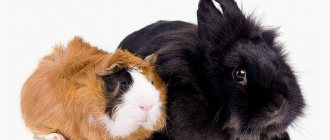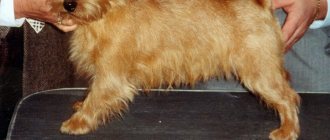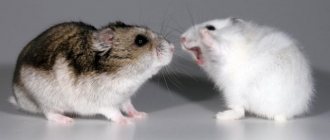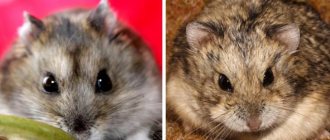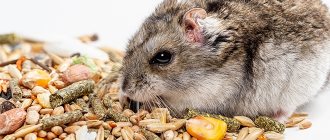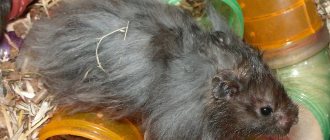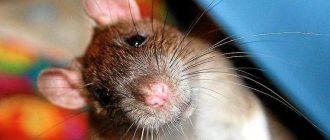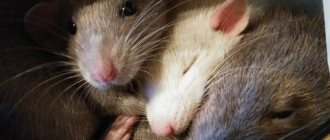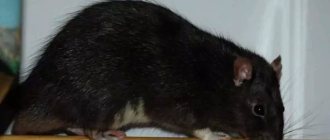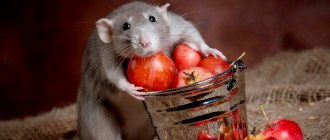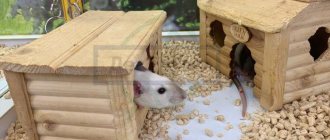- Wild animals
- >>
- Mammals
Forest dormouse are mammals from the order of rodents. These cute little animals are so small that adults easily fit in the palm of a person. The long fluffy tail that dormouse can boast of gives them a resemblance to a squirrel, and the contrasting color of the fur, ranging from yellowish-orange to grey, olive color, gives the animal an elegant look.
Why is it worth buying a rodent for your home?
Any, even the most unpretentious pets at first glance require care: proper nutrition, timely medical care, provision of the “correct” living conditions, education and training. The only question is how much time and finances have to be spent on providing appropriate care.
The dog needs frequent walks. And walking with four-legged pets is not only a pleasant pastime in the fresh air, but also constant washing of paws, examinations for ticks, treatment for minor cuts and other injuries.
In addition, dogs require mandatory training. Yes, yes, even small decorative dogs taken into the home solely “for pleasure” should know the boundaries of what is acceptable and have a clear idea of what is allowed and what is not allowed.
Cats, unlike dogs, do not require obligatory walking and, in general, behave more independently. However, at the same time, many pet owners note the waywardness or even “capriciousness” of their pets.
If a dog is a pack animal and therefore requires constant communication, then cats most often behave like loners. Yes, the cat can climb onto your lap or “ask” for attention, but he will only do this when he wants. Cats carefully respect their personal boundaries. The scars on the hands of their owners are further confirmation of this.
Parrots and other feathered pets do not require as much space as cats and dogs. However, they need almost the same amount of attention. Parrots are sociable guys, which means that they definitely need an “interlocutor.” If you don't have time to play with your pet, you will have to get two birds at once - but in this case you may turn out to be a “third wheel” for them.
The fish are too “asocial” and require special care. Aquarium keeping is a serious hobby, often expensive and requiring certain skills. Before acquiring a “real” aquarium, a beginner will have to get his hands on less demanding pets.
- Top 7 aquarium fish for beginners
Do you dream of aquarium fish, but are you afraid of not being able to cope? Let's talk about the easiest types and breeds to care for.
Turtles , both waterfowl and land ones, require special conditions of detention. Correct levels of humidity and air temperature, absence of drafts, a certain ventilation regime - ensuring all this may not be as simple as it seems at first glance.
At the same time, domestic rodents do not require as much communication as dogs, do not behave as capricious as cats, do not make noise like parrots, and do not require special conditions like fish or turtles.
Do not think that the list of domestic rodents is limited to hamsters and guinea pigs. In reality there are many more. Let's talk about the most popular ones.
Syrian (golden) hamster
Syrian, also known as golden, or Western Asian hamsters are small animals with a length of 13 to 14 cm, of which approximately 1.5 cm is in the tail. Weight – 100-125 g. They are omnivores, in natural conditions they feed on seeds, nuts and some insects (ants, flies, wasps, cockroaches). In captivity they can live up to 3-4 years. The color can be golden, white, black, silver or brown.
A solitary animal that does not require a partner for communication, but easily finds a common language with its owner.
Control measures
How to get rid of a shrew mouse depends on the degree of infestation and the type of object where the animals have settled. The same methods are used as for gray mice. The use of poisons is reserved for severe cases.
- It should be removed from gardens and vegetable gardens using the repellent method. Sprinkle the area with wood ash, lay out grass to prevent mice: burdock, elderberry, wormwood, tansy.
- In outbuildings, cats cope well with rodents. They set mousetraps and traps if necessary.
- To get rid of them indoors, they use poisonous bait, a glue trap, and other modern methods of rodent control.
The shrew bothers humans much less often than its relatives - ordinary mice. The appearance of several individuals on the site does not require emergency measures. The rodent will destroy harmful insects and loosen the soil.
Djungarian hamster
A miniature rodent up to 10 cm long and weighing up to 65 g. Life expectancy is 10-12 months in the wild, and about 2-2.5 years in captivity (some individuals live up to four years). There are several color options - brown-gray (standard), gray-bluish (sapphire), matte white with gray intervals (pearl), red-cream (mandarin).
A distinctive feature is a dark strip of fur along the spine. It is curious that in winter the animals molt, and their fur becomes almost completely white.
They get along well in the same cage with representatives of their species.
Origin of the species and description
Photo: Forest Dormouse
The dormouse family has 28 species and reaches 9 genera. In Europe, the distribution area is confined to the oak area. In Asia and Transcaucasia, the dormouse lives in forests of various types. The western border of the habitat is the northern slope of the Alps. In the region of Southern Europe, these animals are common on the Balkan Peninsula and partly in Greece. And on the Apennine Peninsula, animals live only in the Calabrian Mountains. While dormouse inhabits Eastern Europe almost completely, with the exception of northern Poland, and in Ukraine it cannot be found in the Crimea and the Black Sea regions.
Distributed throughout the territory of the Republic of Belarus. Small populations are found in Asia Minor, northern Pakistan, Iran, Turkmenistan, western China, and northern Afghanistan. The eastern border of the species’ habitat is the western slope of the Mongolian Altai.
On the territory of the Russian Federation, forest dormouse are found in the Pskov, Novgorod, and Tver regions, as well as in the north-west of the Kirov region and the south-west of the Volga region.
In the European part of Russia, the border of the range runs along the right bank of the Don River. Rodents are found in the North Caucasus from the Kuban River basin and further south, covering almost the entire Caucasus region. Found in the forests of Central Asia, Southern Altai, and Eastern Kazakhstan. The dormouse can climb up to 3000 m into the mountains, even reaching the rocky belt.
Chinese hamster
Chinese hamsters differ from their relatives from the Hamster family by their more elongated body proportions.
Young individuals are not very flexible, but if the animal is often communicated with, it very quickly gets used to being handled and even becomes attached to its owners. At the same time, Chinese hamsters do not get along well with their relatives. This is especially true for males, who have a habit of constantly entering into conflict due to the fact that they cannot divide the territory.
There are three types of color: gray (the so-called wild type), spotted white, white (a rather rare variety). They are known for their speed and resourcefulness, so such pets should be kept in a cage with a small distance between the bars. Some owners even set up a special aquarium for them.
Population and species status
Photo: Rodent forest dormouse
Within its distribution area, the stock of forest dormouse in the territory of the former USSR is distributed unevenly. In the European part, in the zone of mixed deciduous forests (Belovezhye, Russian and Belarusian reserves, forest-steppe Ukraine), its abundance is common, but in general it is small.
In the northeast (Pskov, Tver, Volga region, Baltic states) this species of dormouse is becoming less and less common. In these areas, the forest dormouse is listed in the Red Book and requires some attention as a vulnerable and rare endangered species. Over the past 20 years of observation of the species by the VSU biocenter, it was revealed that in 9,800 trap-nights only 1 forest dormouse and several hazel dormouse were caught. At the same time, when examining the titmouse, 8 adult individuals and 2 broods of 6 young animals were found.
There is no concern about the number of these animals in the mountainous regions - the Carpathians, the Caucasus, Transcaucasia, Kodri, Kopet-Dag, Central Asia. Forest animals, dormouse, are not against human proximity. They willingly settle in orchards, vineyards, and walnut groves. In Moldova, there are especially many dormouse due to forest belts of wild apricot, white acacia, and caragana plantings. From which we can conclude that the forest dormouse requires special protection and protection in the CIS countries in the northeastern part of its habitats.
Clawed (Mongolian) gerbil
The gerbil looks like a mouse with a tassel on its tail. They are noticeably different in size from hamsters. Male gerbils can reach a length of 20 cm. It is curious that in captivity, males behave more friendly than females, while females are more active.
In the wild, gerbils live in groups consisting of one male and 2-3 females. Females and males care for the cubs together, however, as soon as the babies grow up, the parents “drive” them away from their territory.
On a note! The best food for gerbils is specially formulated mixtures for rodents. Cabbage, peas, potatoes, sour or too sweet fruits are strictly prohibited. Sometimes protein is added to the diet (egg whites, beetle larvae).
Reproduction
The mating season for shrews lasts about 5 days. A female mates with several males. They raise offspring on their own, sometimes young females are helped by experienced individuals. Pregnancy lasts 24 days.
Shrew Reproduction
Mice are born naked, blind, deaf, and with undeveloped limbs. Within a week they grow thick hair, after 14 days eyes appear, hearing appears, and the development of limbs is completed by 20 days of life. At 30 days, the mice become completely independent. They are expelled from the nest, but live in the same colony.
Interesting!
Shrews have one interesting feature of mass movement of the entire family. The mother mouse gives her tail to the most active baby, who gives his tail to his brother or sister. So everyone takes turns forming a “train”. They move together from one place to another.
About 5 cubs are born in one litter. The female gives birth about 3 times per year. With the onset of cold weather, activity decreases. An adult lives for 2 years, the male always dies 1 month earlier. Cubs often die in late autumn, the strongest survive and reproduce in the spring.
Decorative mouse
Decorative mice are, in essence, distant relatives of the well-known house mice (yes, the same ones that have the habit of settling not far from human homes and often “peeping into the light” of country houses in the autumn-winter period).
The only difference between such mice and their wild relatives is their colors - they are not found in nature.
Mice are social animals, so it is best to keep them in pairs or groups consisting of only females. Males will almost certainly not be able to live with each other.
Domesticated rat
Unlike their wild ancestors, modern domesticated rats are practically not afraid of people and willingly make contact. These are smart animals with a calm and “non-conflict” character.
Like any social creatures, they require constant communication, so in the absence of a “companion” they may begin to experience psychological stress. However, as practice shows, rats very quickly find a common language with humans and, if the latter pays enough attention to the animal, it becomes a faithful and devoted pet.
Guinea pig
In terms of size, guinea pigs are noticeably larger than other domestic rodents. Body length can reach 25-35 cm, weight - 1-1.5 kg (for males) and 0.8-1.2 kg (for females).
Unlike mice and hamsters, which have an average lifespan of 2-3 years, guinea pigs quite often live to a “venerable” 5-7, or even 9 years. They are famous for their flexible nature and peacefulness. It is quite difficult to “irritate” this animal, which is perhaps why they are often taken as pets to families with children.
There are a large number of different breeds of guinea pigs, which differ from each other in length, structure and coat color. When purchasing such an animal for your family, first check the nutritional recommendations, since the menu may vary depending on the breed. For example, hairless guinea pigs are recommended to add more grain to their food, because... they have to spend a lot of energy to maintain the desired body temperature. At the same time, “regular” guinea pigs are given grain in limited quantities, since the high starch content in this product can lead to obesity.
Appearance and features
Photo: Animal forest dormouse
Outwardly, these small animals can easily be confused with a squirrel or a vole mouse. The length of their body reaches 13 cm, while the tail is as much as 17 cm, and their weight is a maximum of 40 grams. The dormouse's muzzle is elongated and contains vibrissae - sensitive whiskers. With their help, animals sense their environment. The vibrissae are mobile; each bundle is responsible for a separate group of muscles. They often reach 20% of the entire body length of dormouse.
The eyes are relatively large, dark, shiny. The ears are medium sized, rounded. The hind limbs are noticeably larger relative to the forelimbs. They have 5 fingers, while the front ones have 4. The legs are thin and short. Females are usually smaller in size than males.
The fluffy, flattened tail not only serves as decoration for the animal, but also helps maintain balance when moving through the treetops. The skin of the tail is equipped with many blood vessels, which helps determine the mood of the dormouse. When the animal is calm, the fur is in a pressed position. But if the dormouse is angry or frightened, the tail shaft turns dark pink and the fur fluffs up, like a cat, to appear larger to its opponent.
Flexible fingers help the forest dormouse confidently climb trees and cling to thin branches. There are 6 large and convex calluses on the paws. The animal has a grayish color on top, with a black stripe running from nose to ear. The lower part is white or light yellow. The dormouse has 20 teeth in its mouth.
Chinchilla
Chinchillas are active animals, which means that they need spacious and, preferably, multi-level cages where the rodent can freely perform its “acrobatic studies”. Separately, it is worth mentioning the care of your pet’s fur. A chinchilla should be given a so-called dust bath several times a week. To do this, sand is poured into a relatively deep container, for example, a deep cat litter box, or better yet, a special powder in which the animal falls out, cleaning itself.
Young chinchillas very quickly get used to a person, but not so much as to allow him to constantly carry them in his arms. He is unlikely to make a companion animal.
African dormouse
It is a rare pet that can compete in agility and agility with the African dormouse. This animal is considered very active and restless even by rodent standards, so you can keep it in an apartment only if you can provide it with complete safety. There are known cases when animals ran away even from seemingly completely impregnable cages, hiding from their owners throughout the apartment for days.
Therefore, African dormice are often recommended to be kept in a terrarium with a well-closed lid. The diet of these animals is noticeably different from the menu of other rodents. While hamsters, mice and guinea pigs base their menu on plant foods, African dormouse prefer food of animal origin - small insects, mealworms, eggs. However, plant foods cannot be completely excluded from the diet.
Lifestyle
The shrew mouse tries to stay away from human possessions, forced to relocate by necessity - premature frosts, floods, fires, lack of food.
In the wild, shrews feed on insects, worms, and small species of mammals. They readily eat plant foods. They bring more benefit to humans than harm - they eat harmful insects. However, in case of a severe invasion, measures must be taken, since the shrew damages crops in the fields.
The animal lives no more than 2 years, often becoming a victim of attacks by wild animals, its large relatives, birds, lizards, and snakes. It is nocturnal and builds burrows underground.
The shrew has an excellent sense of smell. This feeling helps her live, since the animal’s vision is extremely weak. In this, the mouse is similar to another underground inhabitant - the mole.
Interesting!
The elongated nose of the mouse can be interestingly bent upward to catch the aroma of food or the smell of an enemy. The nasal passage serves as both the eyes and the respiratory organ.
Degu (Chilean squirrel, bush rat)
Relatively large rodents with a body length of 9 to 12 cm, of which about 7-9 cm “goes” to the tail. These are very social animals that get along well with each other, but it is still not recommended to breed them in large groups, since the rodent needs a lot of space for full development. The best option is to house a couple of degus of the same sex - this way the pets won’t get bored, and you won’t have to look for owners for numerous offspring.
Unlike guinea pigs, degus do not like to be treated freely and can bite strongly, therefore, when choosing a rodent for a family with small children, you should give preference to a more peaceful and phlegmatic animal.
If you have long wanted to have a pet, but doubt that you will be able to pay enough attention to it, start with a rodent. So, within a few months after purchasing the animal, you will understand whether your lifestyle allows you to take responsibility for a more “demanding” pet.
